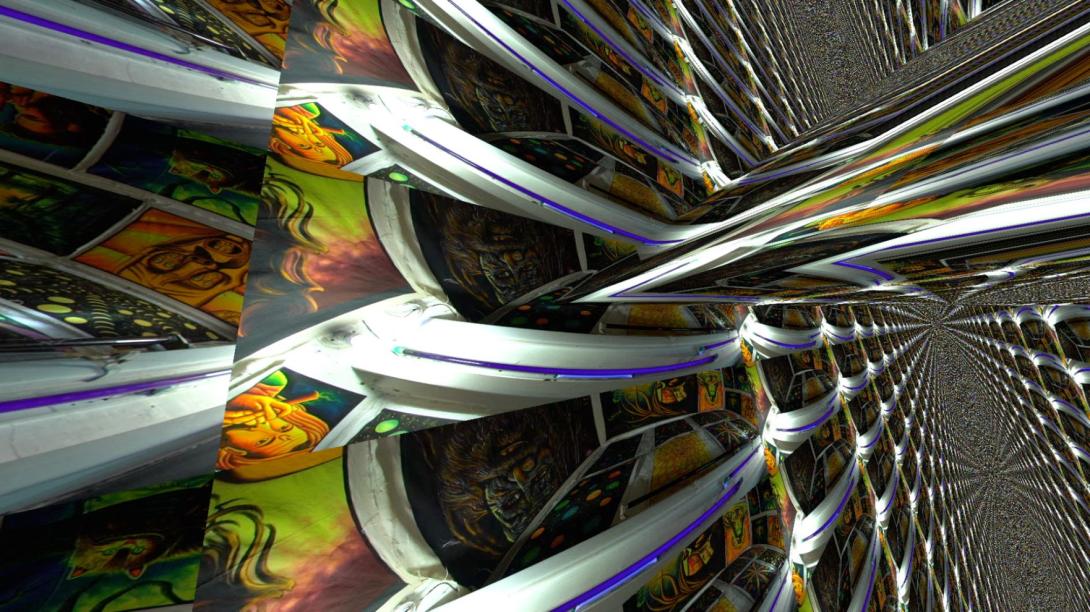Mochu
APT9
Born 1983 Kerala, India
Lives and works in New Delhi, India
Primarily working with video and text, Mochu combines refined technical production with his research into historical, science fiction and literary themes. He has created a number of video works revisiting art historical figures such as K Ramanujam, an important artist who lived in Chennai’s Cholamandal Artists’ Village during the 1960s. Ramanujam was known for his black and white drawings of fantasy landscapes and mythical cities. Taking inspiration from these utopian and dream-like works, in his recent video practice, Mochu has been interested in developing what he has referred to as fictions or propositions, responding to the conflation of spirituality and technology in the 1960s and 70s. His works draw on these techno-utopian impulses and the ways in which artists, musicians and writers from these decades assembled traditional knowledge systems from countries such as India, fusing them with techno-scientific research. Visually, his works create a psychedelic overload of entangled imagery and sound.

Mochu / India b.1983 / Cool Memories of Remote Gods (still) 2017 (from ‘Machinic Elixir – Improvisation Two’ series 2016–ongoing) / Single-channel digital video projection, 14:48 minutes, colour, sound / Commissioned by Sharjah Art Foundation – SB 13, 2017 / © and courtesy: Mochu
Mochu’s videos, drawings and writings are inspired by science fiction and Indian art history, and he constantly questions how we perceive reality and represent our visions of future. Working with the lineage of psychedelic art, Cool Memories of Remote Gods 2017 examines the fascination with non-Western cultures in 1960s counterculture; as a member of a younger generation, Mochu follows the hippie trail in India today to find the kitsch and decaying remains of the counterculture’s spiritual journey. Mochu proposes that these remnants of the recent past can teach us about the possibilities for tomorrow.
Throughout Cool Memories of Remote Gods, Mochu uses simple and recurring filmic techniques, stretching parts of the image across the screen or inserting inverted footage. These techniques create altered perspectives, exemplified in the scenes with warping roads or lava flowing from the sky. In this way, things that are usually taken for granted, such as normal earthly conditions, are visually and symbolically upended. What comes into question is whether it is reality or our perception that is askew in these images.
